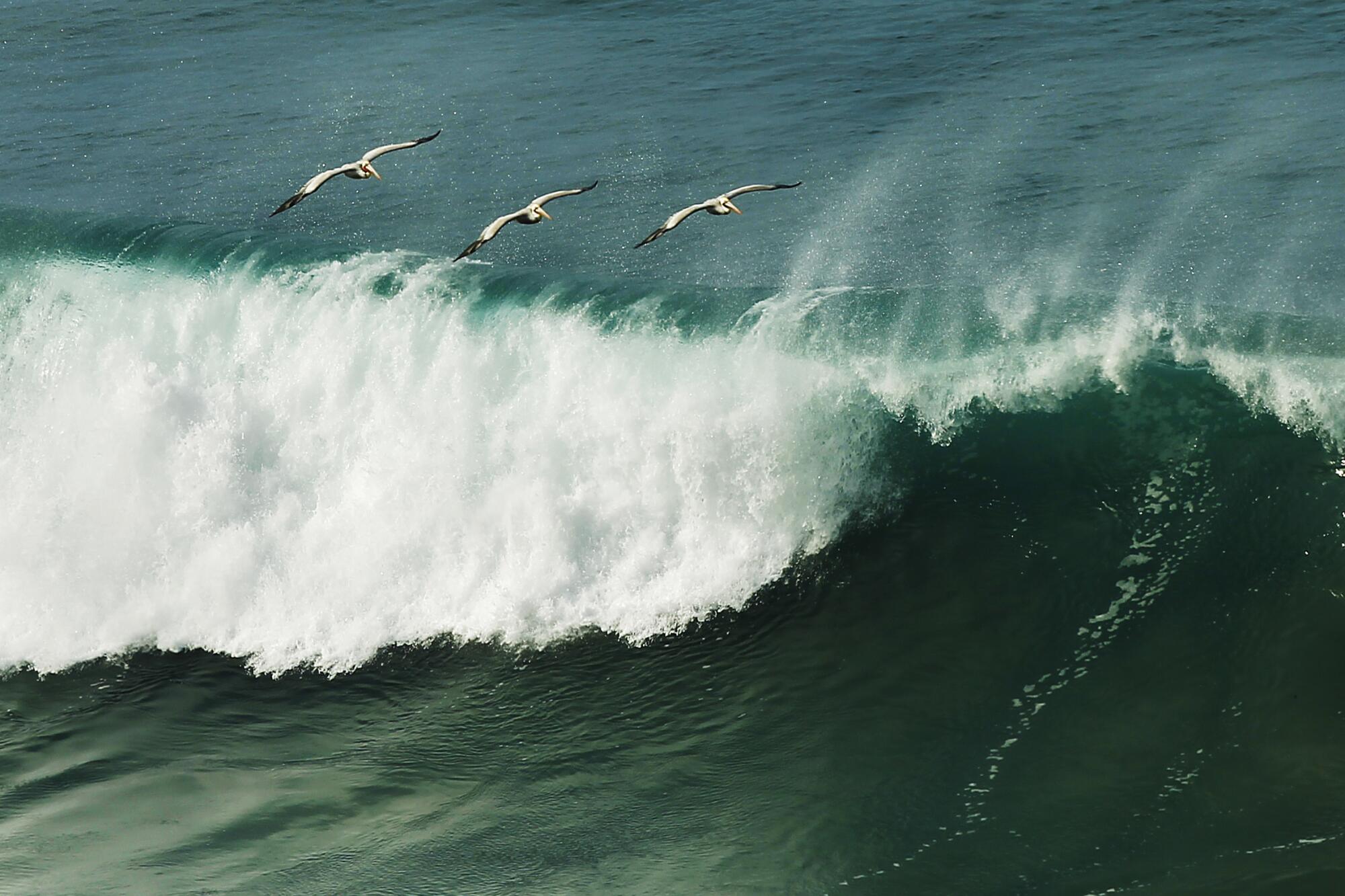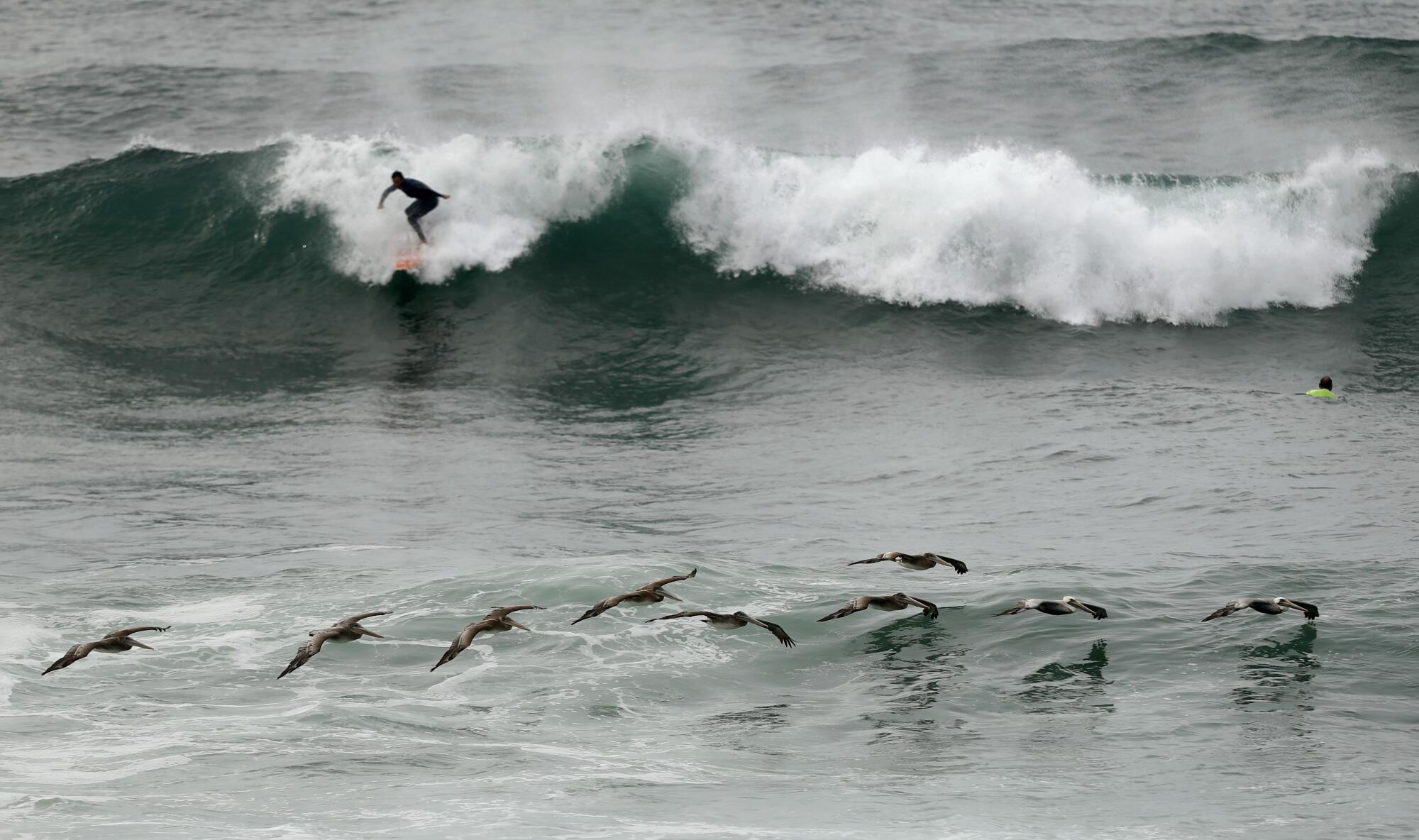
SAN DIEGO — Take a walk along the beach in and you’re likely to marvel at the majesty of bird life.
Sleek brown pelicans descend from the sky and glide — often hundreds of yards at a time — just above the ocean’s surface, in front of building waves.
It’s a common phenomenon not deeply understood — until now.
UC San Diego has come up with the most detailed theoretical model yet for describing and quantifying how pelicans harness the ocean and winds with little or no need to flap their wings.
The bottom line: Pelicans — which have wingspans up to 7.5 feet — are fantastically skilled at gliding atop the updraft of wind that is created by moving waves. The waves get steeper as they near shore, further strengthening the updraft.
The bigger the wave, the bigger the lift. And pelicans know it; they get as close as possible to the ocean’s surface, where the updraft is strongest. It’s not unusual for a 6-foot wave to produce a 30-foot-tall updraft.

The birds typically glide until the wave breaks, then soar back into the sky, only to quickly drop back down to repeat a process that isn’t very taxing on them physically.
“They’re using the environment to make their lives easier; it’s like riding a bike downhill,” said Ian Stokes, a doctoral student at UC San Diego’s Scripps Institution of Oceanography.
Stokes is the lead author of the new model, which was recently published in the journal Movement Ecology, with lots of guidance from his advisor, Scripps oceanographer Drew Lucas.
The model is basically a set of mathematical equations that enable scientists to determine how much energy pelicans can save by gliding on the updrafts. In some cases, the birds save comparatively little energy. In other cases, they don’t have to flap their wings at all.

The model factors in everything from the height and periodicity of waves to how close pelicans fly to the ocean’s surface.
Stokes began developing the model at UC Santa Barbara, where he earned a bachelor’s degree in physics. To his surprise, Lucas encouraged him to develop the idea further when he arrived in La Jolla.
“I thought it was a silly little thing — not a significant problem,” Stokes said. “I thought we needed to focus on climate change.”

In a very real sense, that’s what he’s been doing.
“This work is teaching us about how the atmosphere and the oceans interact,” Lucas said. “And how they exchange energy. That’s what’s involved in climate change. We’re learning important things about ocean and atmospheric physics.”
The new model also could help biologists and ornithologists who are more broadly studying the metabolic cost of flight among birds.
Stokes’ new study involves one of the most beloved water birds. Pelicans can ascend 60 to 70 feet into the air, where they’re able to easily see the fish they prey on. And they can fly up to 30 mph, often in handsome V-shaped formations.
“I love the fact that they are a mix of elegance and awkwardness,” said Nigella Hillgarth, a nature and wildlife photographer who formerly served as director of UC San Diego’s Birch Aquarium.
“They can look awkward when moving about on land, and sometimes when they’re fishing. But they’re incredibly graceful when they’re gliding through the air. I often gaze at the pelicans until they fly so far I can barely see them anymore as they skim over the water.”
Robbins writes for the San Diego Union-Tribune.
More to Read
Sign up for Essential California
The most important California stories and recommendations in your inbox every morning.
You may occasionally receive promotional content from the Los Angeles Times.









